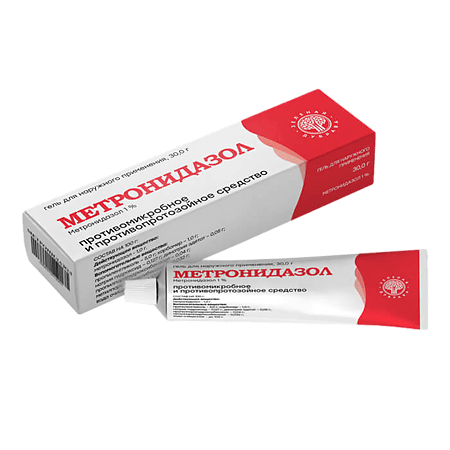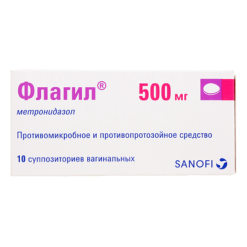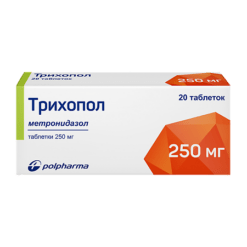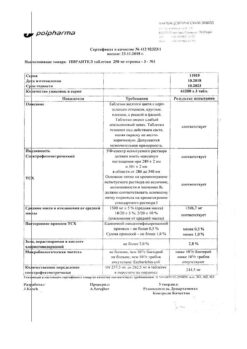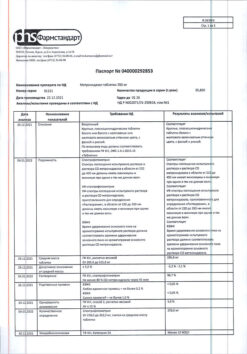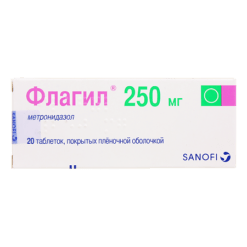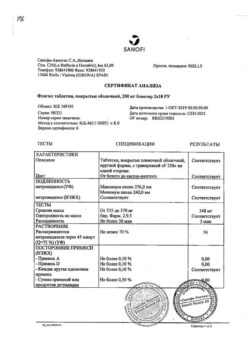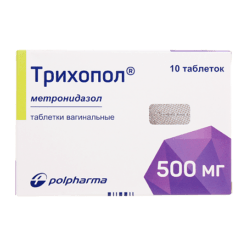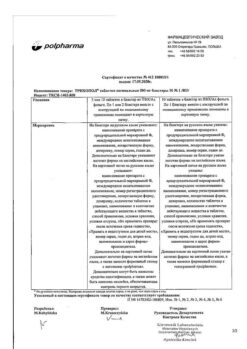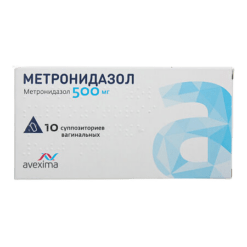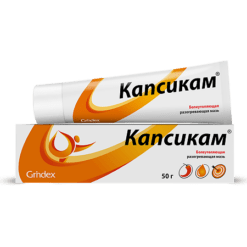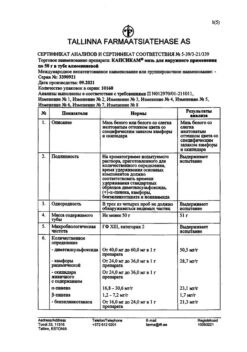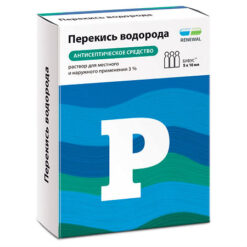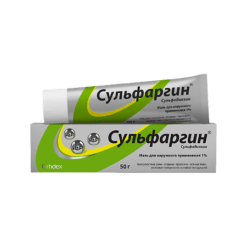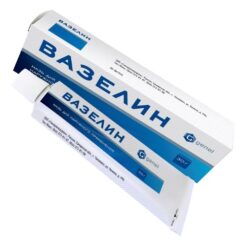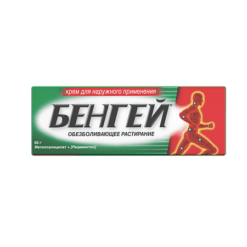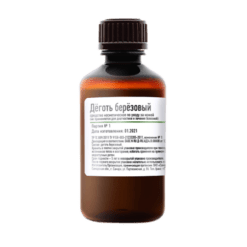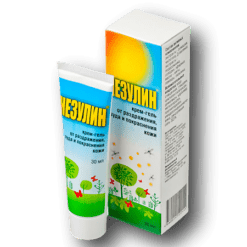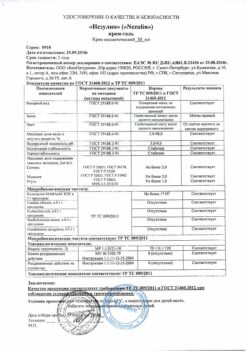No products in the cart.
Metronidazole, gel 1% 30 g
€4.82 €4.02
Description
Metronidazole is a nitroimidazole derivative. It has antimicrobial and antiprotozoal activity against Gram-negative aerobic and anaerobic microorganisms and protozoa. Metronidazole is especially effective against papulopustular inflammatory elements of rosacea when applied topically. The mechanism of action seems to include an anti-inflammatory effect as well.
Pharmacokinetics
The maximum plasma concentration of metronidazole when 1 g of gel is applied externally to the facial skin averages 32.9 ng/ml (range 14.8-54.4 ng/ml) and is reached after 6-24 hours. Maximum plasma concentration of metronidazole in external use does not exceed 0.5% of the average maximum plasma concentration of metronidazole after oral use of 250 mg of metronidazole in tablet form. When administered externally, the concentration of metronidazole in the gel application site is significantly higher than in blood plasma. Binding to plasma proteins is insignificant. The lowest concentration of metronidazole is determined in adipose tissue. It is excreted by the kidneys unchanged and as metabolites.
Indications
Indications
Treatment of rosacea.
Pharmacological effect
Pharmacological effect
Metronidazole is a nitroimidazole derivative. It has antimicrobial and antiprotozoal activity against gram-negative aerobic and anaerobic microorganisms and protozoa. Metronidazole, when applied topically, is especially effective against papulopustular inflammatory elements of rosacea. The mechanism of action appears to also include an anti-inflammatory effect.
Pharmacokinetics
The maximum concentration of metronidazole in blood plasma with external application of 1 g of gel to the facial skin averages 32.9 ng/ml (range 14.8-54.4 ng/ml) and is achieved after 6-24 hours. The maximum concentration of metronidazole in blood plasma when applied externally does not exceed 0.5% of the average maximum concentration of metronidazole in blood plasma after oral administration of 250 mg of metronidazole in tablet form. When applied externally, the concentration of metronidazole at the site of application of the gel is significantly higher than in the blood plasma. Communication with plasma proteins is insignificant. The lowest concentration of metronidazole is determined in adipose tissue. It is excreted by the kidneys unchanged and in the form of metabolites.
Special instructions
Special instructions
Avoid contact of the gel with the eyes and mucous membranes. In case of accidental contact, rinse thoroughly with warm water.
If signs of skin irritation appear due to the use of the drug, you should reduce the frequency of its application, temporarily suspend or discontinue use of the drug, and consult a doctor.
During treatment, exposure to ultraviolet (UV) radiation (direct sunlight, solarium, sun lamps) should be avoided. Under the influence of UV radiation, metronidazole becomes an inactive metabolite, so its activity is significantly reduced.
Metronidazole is a nitroimidazole derivative and should be used with caution in patients with blood disorders, including a history.
Avoid excessive and prolonged use of the drug.
This product contains propylene glycol, which may cause skin irritation.
Considering that the drug contains methyl parahydroxybenzoate and propyl parahydroxybenzoate, there is a risk of developing allergic reactions.
Impact on the ability to drive vehicles and machinery
The drug does not affect the ability to drive vehicles and machines (based on the pharmacodynamic profile and clinical experience with use).
Active ingredient
Active ingredient
Metronidazole
Composition
Composition
Active ingredient: metronidazole – 1.0 g.
Excipients: propylene glycol – 5.0 g, carbomer – 1.0 g, sodium hydroxide – 0.127 g, disodium edetate – 0.05 g, propyl parahydroxybenzoate – 0.04 g, methyl parahydroxybenzoate – 0.032 g, purified water – up to 100.0 g.
Pregnancy
Pregnancy
Pregnancy. There are no data on clinical experience with topical use of metronidazole in pregnant women. When taken orally, metronidazole penetrates the placental barrier and quickly enters the fetal bloodstream. No evidence of fetal toxicity was observed following oral administration of metronidazole to rats and mice.
However, because reproductive toxicity studies in animals are not always predictive of response in humans, and because metronidazole has been shown to be carcinogenic when administered orally to rodents, Metronidazole gel should only be used during pregnancy if the expected benefit to the mother outweighs the potential risk to the fetus, after consultation with a physician. If you are pregnant, or think you might be pregnant, or are planning a pregnancy, you should consult your doctor.
Breastfeeding period. After oral administration, metronidazole passes into breast milk in concentrations similar to those found in blood plasma. Despite the fact that after topical use of metronidazole in breastfeeding women, its plasma concentration is significantly lower than after oral administration, the decision to stop breastfeeding or discontinue use of the drug should be made taking into account the importance of the drug for the mother and the risk to the child after consultation with a doctor.
Contraindications
Contraindications
Hypersensitivity to metronidazole and other components of the drug. Children under 18 years of age.
Side Effects
Side Effects
Classification of adverse reactions to the body and systems, indicating the frequency of their occurrence: very often (≥ 1/10), often (≥ 1/100, < 1/10), infrequently (≥ 1/1000, < 1/100), rarely (≥ 1/10000, < 1/1000), very rarely (< 1/10000), including isolated reports, frequency unknown (frequency cannot be estimated from available data).
Skin and subcutaneous tissue disorders
Common: dry skin, erythema, itching, skin discomfort (skin burning sensation, skin soreness/tingling), skin irritation, increased manifestation of rosacea.
Frequency unknown: contact dermatitis, skin peeling, facial swelling.
Nervous system disorders
Uncommon: hypoesthesia, paresthesia, dysgeusia (“metallic” taste in the mouth).
Gastrointestinal disorders
Uncommon: nausea.
If you experience the side effects listed in the instructions or they get worse, or you notice any other side effects not listed in the instructions, tell your doctor.
Interaction
Interaction
When using the gel, no cases of interaction with other drugs have been reported. Interaction with systemic drugs is unlikely due to the low absorption of metronidazole when applied topically.
However, a disulfiram-like reaction has been observed in a small number of patients when metronidazole and ethanol were administered orally at the same time.
The warning to exercise caution when using metronidazole concomitantly with warfarin or other indirect anticoagulants due to the possible increase in prothrombin time applies only to metronidazole taken orally.
If you are using the above or other medications (including over-the-counter medications), consult your doctor before using Metronidazole gel.
Overdose
Overdose
To date, there have been no reports of cases of overdose with external use of the drug. When using the drug in accordance with the instructions for use, an overdose is unlikely.
Storage conditions
Storage conditions
At a temperature not exceeding 25 °C.
Keep out of the reach of children.
Shelf life
Shelf life
3 years. Do not use after expiration date.
Manufacturer
Manufacturer
Green Dubrava, Russia
Additional information
| Shelf life | 3 years. Do not use after the expiration date. |
|---|---|
| Conditions of storage | At a temperature not higher than 25 ° C. Keep out of reach of children. |
| Manufacturer | Zelenaya Dubrava, Russia |
| Medication form | gel for external use |
| Brand | Zelenaya Dubrava |
Other forms…
Related products
Buy Metronidazole, gel 1% 30 g with delivery to USA, UK, Europe and over 120 other countries.

